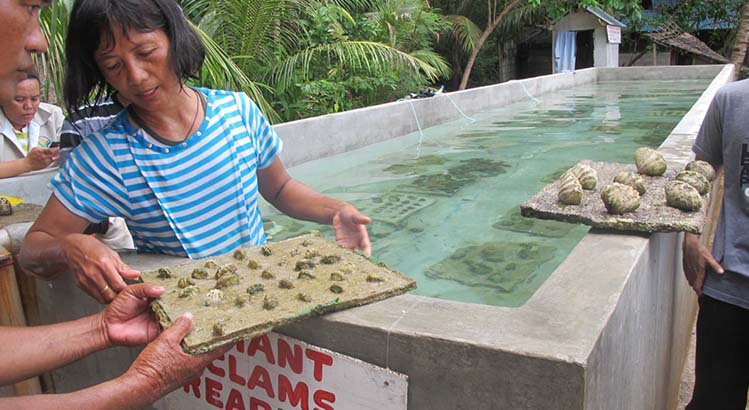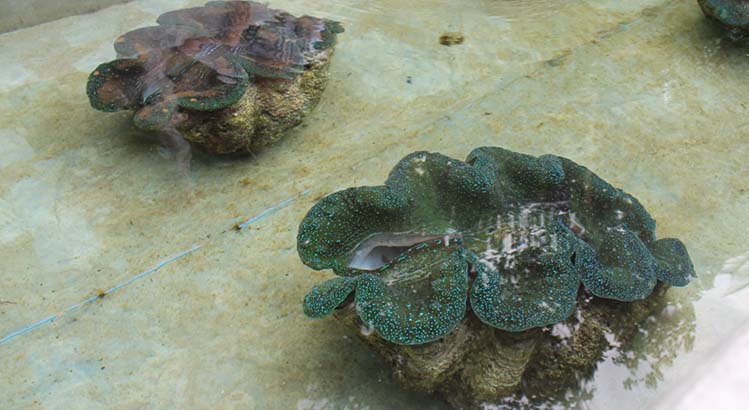
By Nadine Arabelle L Vivares
Giant clams are the largest species of bivalve mollusks, and they have an important role to play as “ecosystem engineers” of the coral reefs. Out of the nine species of giant clams that exist in the world, seven are found in the Philippines. Unfortunately, majority of the species are listed as endangered by the Convention of the International Trade in Endangered Species of Wild Fauna and Flora (CITES).
In an effort to reintroduce and propagate the clams in Macajalar Bay, the McKeough Marine Center of Xavier University (XU-MMC), in partnership with Cantaan Centennial Multi-Purpose Cooperative (CCMPC) and Macajalar Bay Development Alliance (MBDA), organized the “Clam Seeding and Culture in Macajalar Bay,” a seeding effort to establish a breeding stock of giant clams in the bay.
Choosing the best sites for seeding
Prior to the actual clam seeding and culture, members of the local government unit conducted a site-selection assessment using a set of criteria to determine which marine protected areas (MPAs) are best suited to receive the clams. The four species of giant clams, namely Tridacna squamosa, Tridacna maxima, Tridacna crocea, and Hippopus hippopus came from a giant clam sanctuary managed by the CCMPC in Cantaan, Camiguin.
The areas selected should be conducive enough for the stock to survive, thrive, and hopefully spawn. Criteria include, among others, the presence of native species, corals, clear waters and the presence of Bantay Dagat. MPAs in the municipalities of Laguindingan, El Salvador, Opol, Villanueva, and Balingasag were eventually chosen as the best sites.
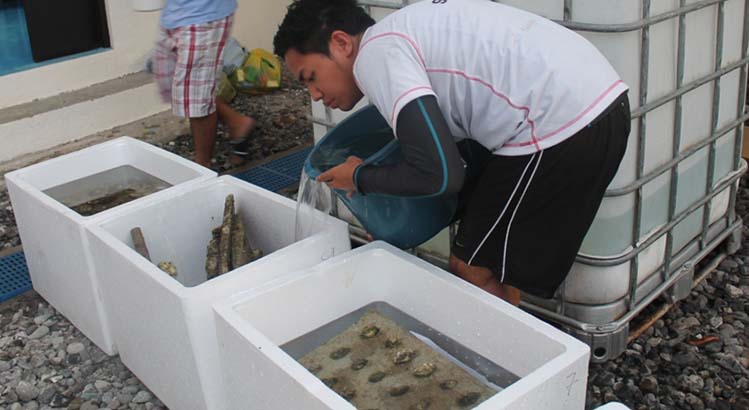
An orientation seminar on “Giant Clam Seeding and Culture” was also held at the XU AVR-2 on August 20 as a primer for the Macajalar Bay LGUs, especially the steward municipalities. The list of speakers included Johnny Cabreira, who shared his experience with clam seedings, and a self-made documentary titled “The Treasures of Agutayan” while Dr Hilly-Ann Roa Quiaoit, XU vice-president for Research and Social Outreach, also known as the “mother of clams,” presented and discussed basic clam biology, as well as clam seeding procedures, maintenance, and monitoring.
Representatives from the Philippine National Police - Maritime Group, the Philippine Coast Guard and Marine Biology students of XU also actively participated as volunteers.
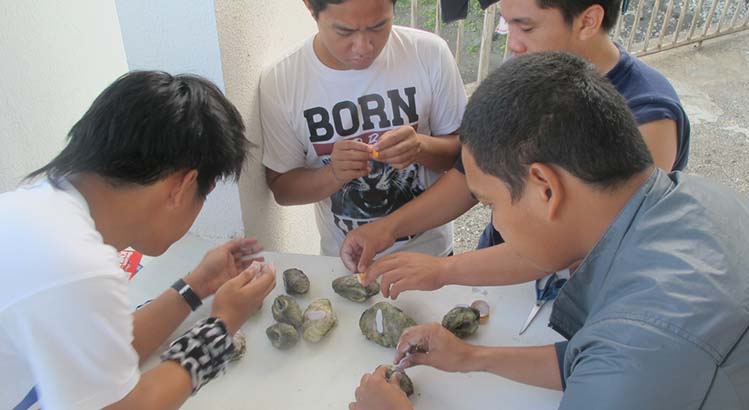
A pledge to restore the giant clams
On September 3, the XU team travelled to CCMPC in Cantaan, Camiguin to retrieve the clams for the seeding, which were already set aside beforehand by the staff of the CCMPC. The clams were carefully packed in containers and kept cool by layers of wet canvas cloths. A total of 200 clams (50 individuals per species) and several hundred juveniles set on cement slabs were packed for transport.
The journey of the clams from Camiguin to the XU-Marine Station in Jasaan lasted 30 minutes via a speedboat, and at least an hour more of land travel via truck. Upon arrival at the station, the clams were quickly unpacked and transferred to tanks of aerated seawater.
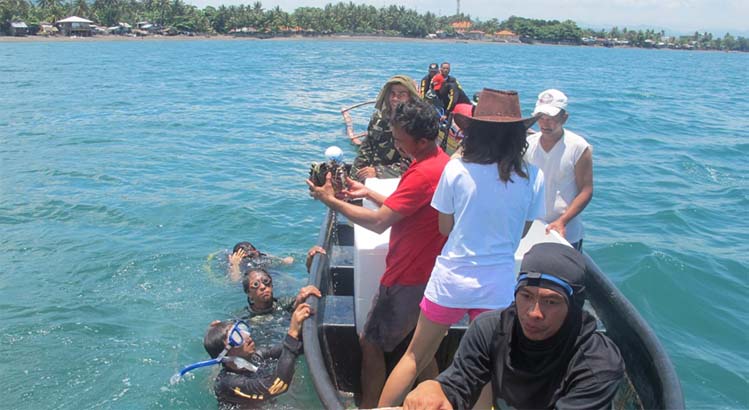
Prior to the clam deployment to the different MPAs the next day, a short program was held at the XU-Marine Station. CCMPC chairperson Alona Cordero spoke about their clam culture in Cantaan, Camiguin. Moreover, Silliman University - Angelo King Center for Research and Environmental Management (SUAKCREM) director and National Scientist Dr Angel Alcala (also former Department of Environment and Natural Resources Secretary) spoke about the importance of clam seeding. The program was culminated by a ceremonial Stewardship Agreement signing between MMC, CCMPC, MBDA, and the steward LGUs, after which the clams were swiftly transported to their respective municipalities and successfully deployed in their MPAs.
The Stewardship Agreement aims to strengthen the collaboration between the parties involved in the clam seeding activity, and to formalize their commitment to work together, cooperate and share resources for the protection and sustainable management of the giant clams seeded in Macajalar Bay.
The clams will be regularly monitored by the steward LGUs in the hopes that they will soon spawn, propagate and ultimately increase in number, saving the clam species from possible extinction.
